|
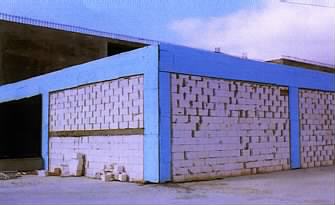
WHERE ARE THEY USED?
Wallmate TB is a thermal bridge resistance material
developed by Dow as the result of its 50 years'
technical expertise and remains unchallenged until
today.
Wallmate TB as a wall thermal resistance material is a
product developed for the external insulation of the
building elements like columns, beams, flanks, lento
etc. that are described as thermal bridges for the
applications where thermal resistance boards are built
as internal walls or sandwich walls.
For the applications where thermal resistance boards are
built as internal walls or sandwich walls as the result
of the Wallmate TB boards and the thermal bridges being
insulated from outside a healthy thermal insulation
close to ideal situation would have been obtained.
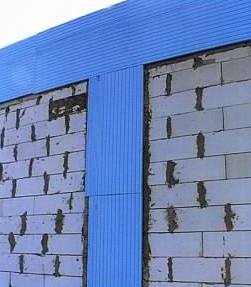
HOW ARE THEY APPLIED?
1- The assembly of the boards.
Wallmate TB boards are placed by being put into the
mould before the cement is formed as well as by being
fixed to the external faces of the carrier elements like
columns, beams etc. after the cement has been formed.
A) Placement into the mould.
1- Appropriate to the sizes of the columns, beams, and
flanks or lento the preparation of the Wallmate TB
boards in conformity of the measurements made using the
qualities in line with easy brake technique by way of
breakage.
2- The placement of the Wallmate Tb boards by way of
eliminating any gaps in-between the molding wood for the
process of placement of the Wallmate TB boards into the
mould itself broken accordingly to the sizes measured
previously.
3- The separation of the iron rigger from the Wallmate
TB boards so that a rust gap is left in between.
The Wallmate TB boards help the cement to cover the rigs
appropriately during the preparation of the cement due
to its high mechanical resistance. Because it doesn't
absorb water into its body the values relating to lambda
do not deteriorate. In addition, especially during the
summer times prevent the cement loosing excessive water
and help a healthy path of winding to happen.
In order for the boards to be attached to the cement
block the surfaces of the boards have specially
developed grooves and rugged faces. Using this method
the process of unfolding will happen more efficiently
and when the mould is taken out the Wallmate TB boards
will have been obtained in a position attached to the
cement block. Materials of walls like bricks, Bims block
and Gazbeton can be aligned with the external surfaces
of the Wallmate TB boards and thus thermal resistance
application to theses parts can be achieved from inside
or sandwich wall production can be facilitated.

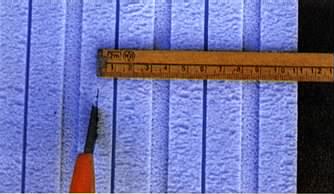
B) THE FIXATION PROCESS TO THE
HEADS OF COLUMNS AND BEAMS OF THE AFTERMATH
1- Appropriate to the sizes of the columns, beams, and
flanks or lento the preparation of the Wallmate TB
boards in conformity of the measurements made using the
qualities in line with easy brake technique by way of
breakage.
2- It must be fixed to the cement faces with plastic
nailed insulation dabbles, close to walls and the
corners of columns-beams or in crossed spaces of 50 cm.
And the dabbles are to be inserted into the cement by at
least 5 cm. In the case of the concrete block bulges
arising from mould failures on the surfaces where the
process is being applied, and these failures prevent the
placement of the boards to the surfaces, the surface
must be broken to be corrected or must be corrected
using alum.
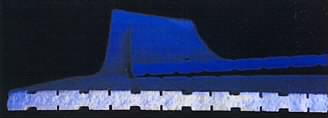
3- In the case of the process of
fixation taking place before the building up of the
wall, the external faces of the bricks, blocks of bims
and gazbeton must be aligned with the external faces of
Wallmate TB boards.
4- In the case of blocks of wall set up previously, it
must be build over to the outside at 3-4 cm. Distance
from the surfaces of the columns-beams (according to the
thickness of the Wallmate TB boards).
2- The Process of Plastering
Before the process of application of plastering to the
surfaces of Wallmate TB boards is started care must be
given that the re are gaps left between the boards. If
there are any these gaps must be filled with Wallmate TB
boards rather than with mortar. If a long time has
passed before the application of plastering has started
and the boards of Wallmate TB have been subjected to UV
rays for a long time, a change of coloring and dusting
might occur on the surface. In this case, the dust must
be removed from the surface using a brush. To prevent
this from happening during the pouring of the cement and
the process of plastering, and a long period is planned
to be left in-between the Wallmate TB boards are to be
protected by light colored covers from the effects of
the UV rays or during the setting up of the wall, must
be fixed to the columns and beams and then are to be
plastered.
The application of plastering can be carried out using
rigger filet or galvanized rabitz wire.
A) In the case of the rigger filet being used:
1- First a single layer of plaster is put onto the
Wallmate TB surface where application of filet is to be
carried out.
2- While the plaster is still wet the rigger filet is
attached to the plaster surface-using trowel. Depending
on the ambient temperature after a period of waiting for
2-24 hours for the path of winding to take effect, the
whole front is to be plastered thin and thick. To
prevent cracks due to work on the building, the
differences in temperature changes etc., only at the
points of enclosures and 20 cm. above the surfaces of
the walls a plaster rigger filet must be used. The filet
must be laid on top of each other reaching 10 cm on top.
The filet to be used for this application must be
alkaline proof, at 130-gr/m2 weight (12 mm x 12 mm filet
porosity) and more importantly must have in two
directions at least 1500 N/5 break resistance. Higher
break resistance values facilitate better security
levels.
B) In the case of galvanized plaster wire to be used.
In the case of the frontal surface faults requiring a
traditional type of plaster to be used, we recommend
that galvanized plaster wires be to be used.
1- It is fixed running over the edges of the
face of the walls about 20 cms to the surfaces where
galvanized plaster wire Wallmate TB is directly applied.
It is to be put on top of each other at 10 cm intervals
at the galvanized plaster wire attachments.
2- Then plaster is applied thin and thick.
In the case of the application of Wallmate TB for the
present buildings at a later stage, it is advised that
to check the surface if it is appropriate for the
pasting to be applied.
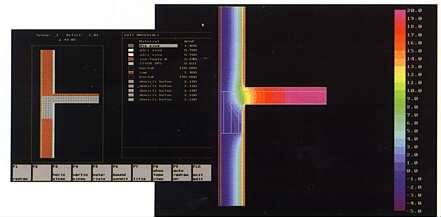
ADVANTAGES
- Even the water is placed into the mould due to
its water absorption capacity does not affect it.
- Due to its high mechanical
resistance the concrete vibration in the mould does not
affect it.
- It provides capability to break
every 5 cm without the need to use model set knife.
- Due to its grooved and
specifically designed rugged surface it attaches to the
concrete surfaces as well as with the use of traditional
plaster types.
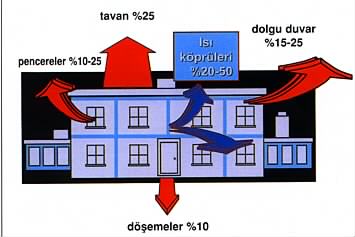
TECHNICAL
SPECIFICATIONS FOR THE INSULATION MATERIALS OF WALLMATE
TB THERMAL BRIDGES
MATERIALS FOR THERMAL RESISTANCE (TS 11989
compatible):The cap less porous polystyrene - extruded
foam XPS boards used for the application of insulation
of thermal bridges must be easily breakable in multiples
of 5 cm layers and thus in form of boards to be fixed to
the carrier system without the need to use model set
knifes. Its surfaces must definitely be rugged and more
importantly have wide grooves, which allow pasting to
concrete and with the use of traditional type of
plasters (TSE 825 standards, article number 10.2.1.2.1.
of attachment number 5 of the official gazette numbered
and dated 23725 and June 14, 1999). In the case of
surfaces not having wide grooves not being rugged the
paste resistance of the boards between the concrete and
the traditional plaster shall not be sufficient.
RATE
OF THERMAL CONDUCTIVITY (LAMDA). It must not be
larger than 0.030 W/m.K for aging at 10 C for 90 days.
DENSITY. Must not be at lower than 28 kg/m3 density.
Although under TS 825, article number 10.2.1.2.1 of
attachment number 5 the lower limit of density is given
as 20 kg/m3 for the boards with rugged surfaces it is
necessary to produce them at values of 28-30 kg/m3
densities to be used to be able to obtain the value of
0.030 W/m.K.
SIZE
DETERMINATION:
a) Change of dimensions in the length and the
width must be zero at 60 C and 90 % relative humidity.
b) Change in dimensions must not exceed 2 % under
20-kPa stresses and at a temperature of 80 C.
c) Must not exceed 2 % under 40-kPa stresses and
at a temperature of 70 C.
Size determination is one of the most important factors
especially for the wall applications of thermal bridges.
Size changes occurring due to differences in
temperatures might create problems on the frontal
surfaces. The sizes of the cells, their placements and
their balances in three directions are very important
regarding paste resistance and size dimension involved.
WATER
ABSORBTION: The water absorption rate for prolonged
periods using full dipping method must not exceed 0.5 %
in volume. Otherwise, the thermal resistance material
absorbs the water of the concrete it is in contact with
or the water of the traditional plaster it is in contact
with and changes the rate of thermal conductivity
(lambda) and the building will start to consume more
energy than anticipated at the beginning.
THE
PASTING RESISTANCE TO THE CONCRETE: The pasting
resistance of the thermal resistance boards to the
concrete must not be lower than 300 kPa in the case of
the thermal resistance boards being put into the moulds
before the cement is poured.
THE
PASTING RESISTANCE WITH THE TRADITIONAL PLASTER TYPES:
The pasting resistance of the thermal resistance boards
with the traditional plasters must not be lower than 150
kPa.
WATER
VAPOUR DIFFUSION RESISTANCE. It must bein between 90
and 110. The values must remain at these levels so that
no condensation occurs at the column and beam cross
sections and at the same time the building can take
wind.
PRESSURE RESISTANCE. Must not be lower than 200 kPa
(TSE 11989, class C2).
RESISTANCE TO FIRE. Must pass the B2 test first,
then must be proven that it has passed B1 class by
applying furnace tests and that it has not been
dripping. Besides the documents obtained from TSE there
must also be certificates granted by the test institutes
in Germany.
CAPILARITY. Must be zero.
SPECIFICATIONS OF THE SURFACE AND CAPACITY FOR BREAK AND
PASTE: must be easily breakable in multiples of 5 cm
layers and thus in form of boards to be fixed to the
carrier system without the need to use model set knifes.
Its surfaces must definitely be rugged and more
importantly have wide grooves, which allow pasting to
concrete and with the use of traditional type of
plasters
LENGTH, WIDTH, DEVIATION FROM THE SET SQUARE, SURFACE
PLANE, THICKNESS. Must be in conformity of the
tolerance levels stated under the standards of TS 11989.
SIDE
PROFILES: the fact that the corners are flat is
useful for repeated usage of the broken pieces and to
speed up the application process.
* Trademark of Dow
Chemical Company. |








